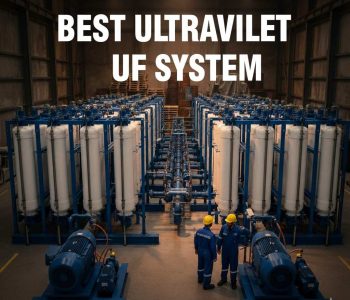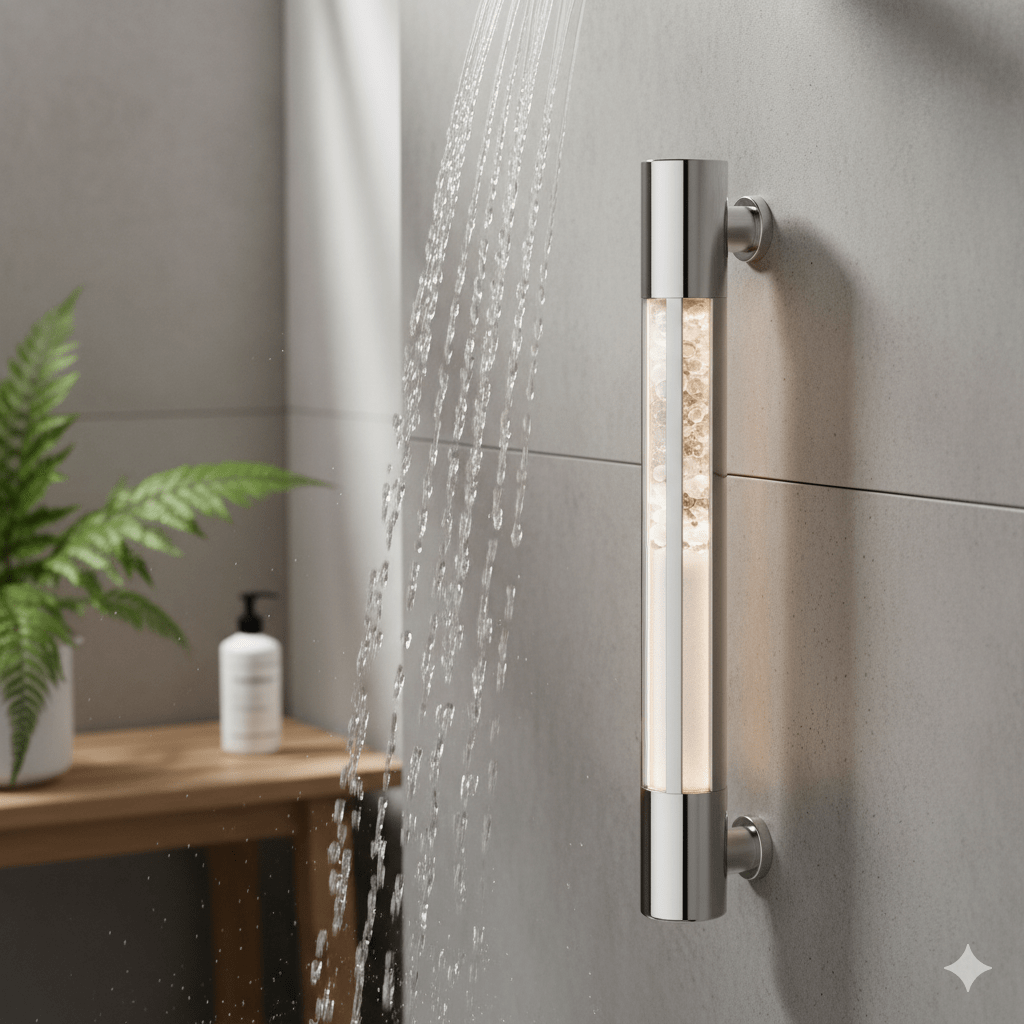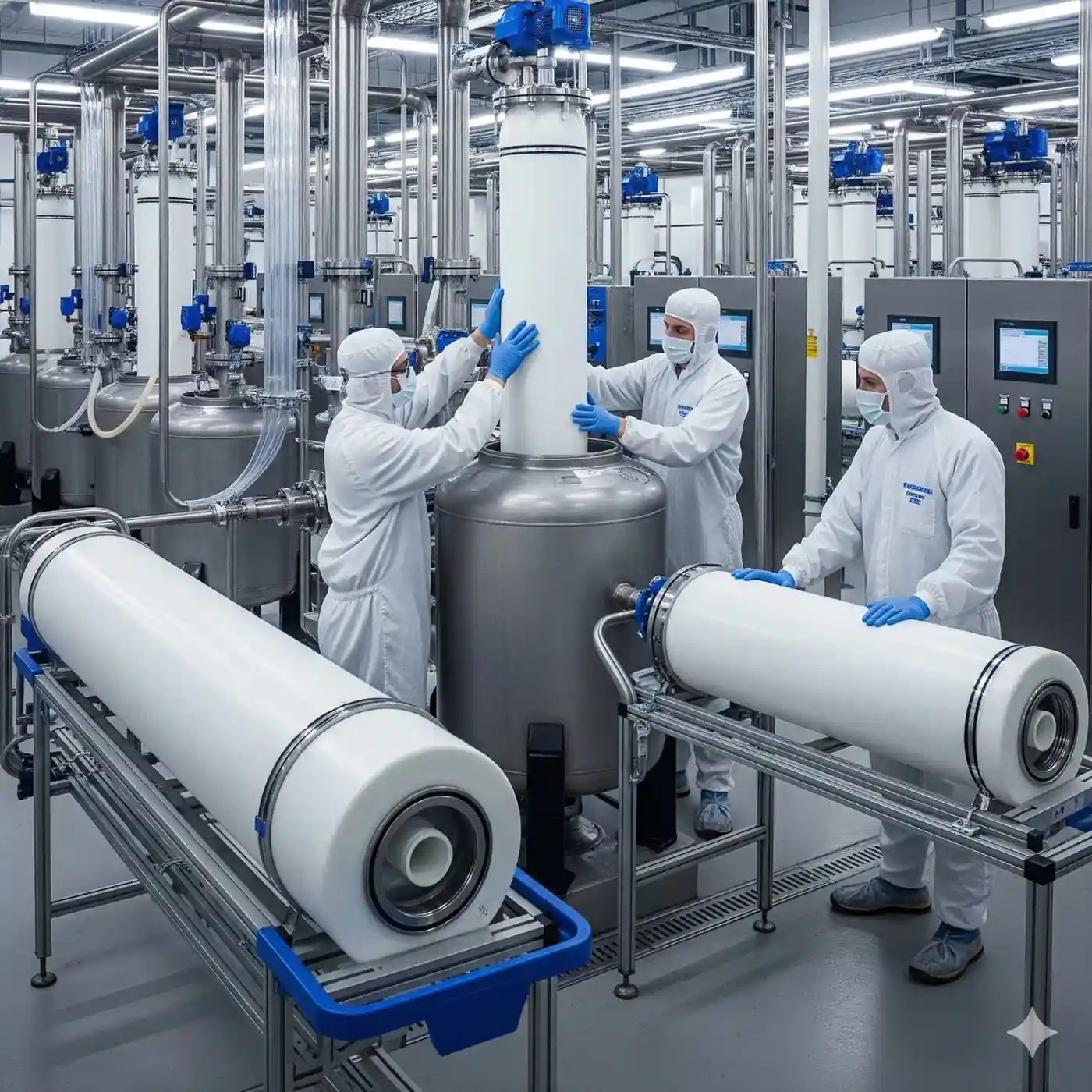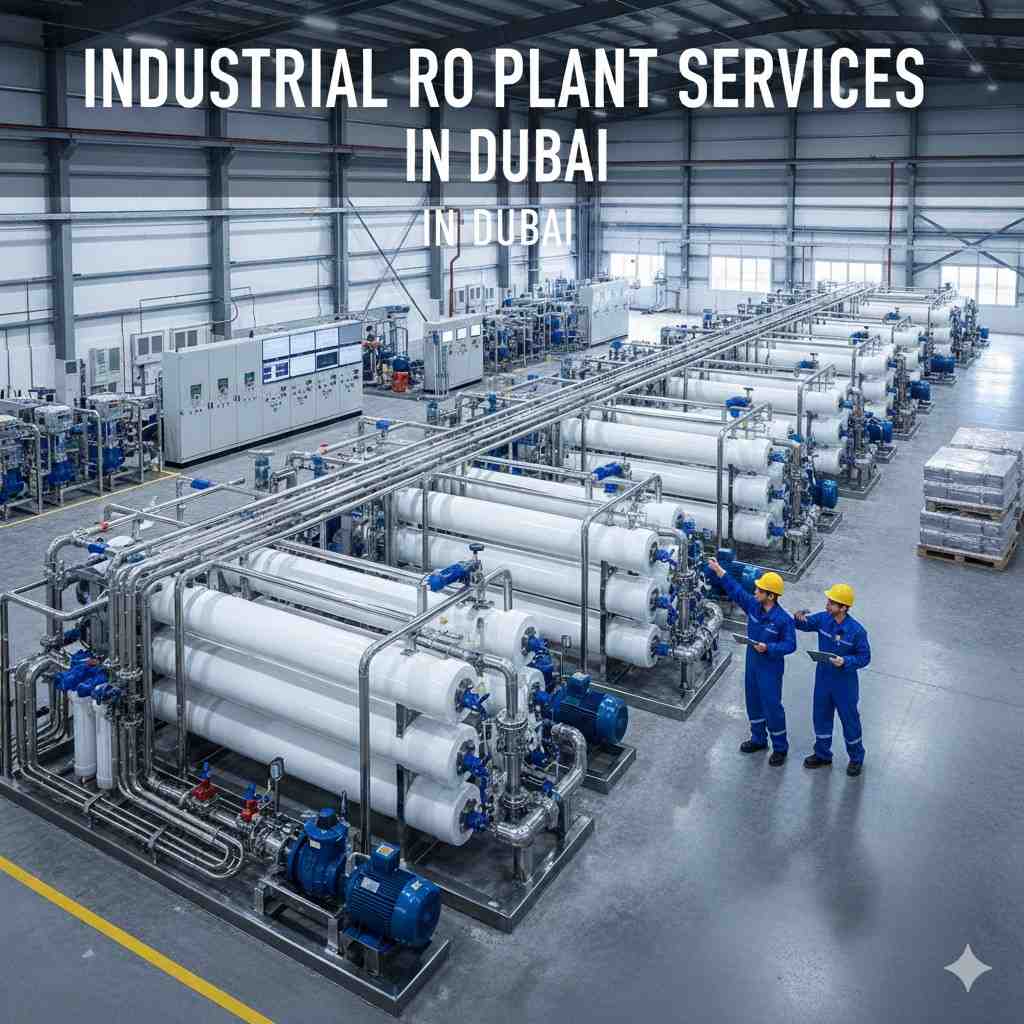Combining Ultrafiltration (UF) and Ultraviolet (UV) disinfection is a highly effective water treatment strategy that uses a physical barrier and chemical-free sterilization to remove a broad spectrum of water contaminants. This multi-barrier approach ensures the highest level of water purity and safety, making it suitable for both municipal and industrial applications.
How ultraviolet (UV) and ultrafiltration (UF) work
Ultraviolet (UV) disinfection
- Process: UV purification uses ultraviolet-C (UVC) light, which has a wavelength of 254 nm, to inactivate harmful microorganisms. As water flows through a chamber containing a UV lamp, the light penetrates the microorganisms’ cell walls and scrambles their DNA and RNA. This renders them unable to reproduce and cause illness.
- What it removes: UV is a highly effective method for eliminating bacteria, viruses, and other pathogens, destroying up to 99.99% of these microbes.
- What it doesn’t remove: UV is a disinfection process, not a filtration one. It does not remove physical impurities like sediment, dirt, or other dissolved solids.
Ultrafiltration (UF)
- Process: Ultrafiltration is a membrane-based technology that uses hydrostatic pressure to push water through a semi-permeable membrane with microscopic pores, typically ranging from 0.01 to 0.1 microns. This acts as a physical barrier, trapping larger contaminants while allowing water and dissolved minerals to pass through.
- What it removes: UF effectively removes suspended solids, bacteria, protozoa (like Cryptosporidium and Giardia), and some viruses.
- What it doesn’t remove: The UF membrane’s pores are not small enough to block dissolved salts, chemicals, or other ions, as those are smaller than the pore size.
The combined UV-UF system: A multi-barrier approach
When used together, UV and UF create a powerful and comprehensive water treatment system. UF acts as a robust pre-treatment for UV, and UV provides a final polishing step.
- Water enters UF stage: The raw water first passes through the ultrafiltration module, where physical contaminants like suspended solids, turbidity, and most bacteria and viruses are physically blocked by the membrane.
- UF output to UV stage: The filtered water, or permeate, from the UF module is then sent to the UV disinfection chamber.
- UV stage for sterilization: Here, the UVC light attacks and neutralizes any remaining microorganisms that may have passed through the UF membrane or been introduced downstream.
- Final water output: The water leaving the UV chamber is both filtered and sterilized, making it safe for a wide range of applications.
Key benefits of the combined system
- Comprehensive purification: The combination provides both superior physical filtration and highly effective chemical-free disinfection.
- Enhanced performance: UF’s ability to remove turbidity and solids ensures the water is clear enough for the UV light to be fully effective, as any “shadows” from particles could otherwise shield microorganisms.
- Improved longevity: By removing particulate matter, the UF stage protects downstream equipment, including the UV quartz sleeves, from fouling and scaling. This extends the lifespan of the UV lamps and reduces maintenance.
- Chemical-free disinfection: Neither technology relies on chemical additives, which eliminates the risk of harmful disinfection by-products and preserves the water’s natural taste and odor.
- High efficiency: The entire process is continuous and rapid, with a small physical footprint, making it suitable for a variety of scales and flow rates.
- Redundancy for safety: The multi-stage process provides a valuable safety net. If one stage were to underperform slightly, the other stage is there to capture or neutralize any missed contaminants.
Applications
The robust and reliable nature of UV-UF systems makes them ideal for a wide range of industrial, commercial, and municipal uses:
- Drinking water treatment: Ensuring the safety of water supplies for homes, businesses, and entire communities.
- Food and beverage industry: Producing ultra-pure water for processing, bottling, and cleaning.
- Pharmaceutical manufacturing: Creating high-purity water for sensitive processes where microbial contamination must be eliminated.
- Wastewater treatment: Providing an advanced stage for water reclamation and reuse applications.
- Hospitality and healthcare: Ensuring clean, safe water for hotels, resorts, and medical facilities.
- Pre-treatment for RO: Serving as an excellent pre-treatment step for reverse osmosis systems, which helps prevent fouling of RO membranes.




